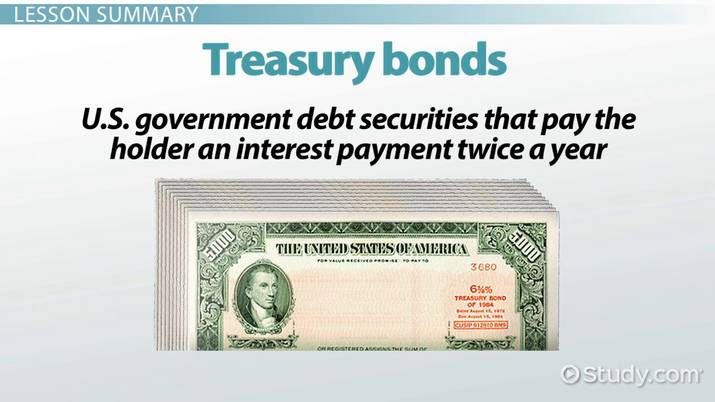
High quality is key when choosing REITs to invest. You should look for great tenants and quality real estate. There are many ways you can invest in real property. However, some prefer to hire professionals. When choosing a REIT, there are many factors you should consider. The following article will show you how evaluate REITs. This includes how to choose the right mutual fund, and how to assess the REIT's value.
Investing in a REIT
An excellent way of investing in rental properties is to invest in real estate investment trusts (REITs), especially if your budget is limited. REITs can offer investors tax benefits that could be very beneficial. Investors can take advantage of depreciation in addition to the 20% pass through deduction. However, the investment company must pay out 90% of its earnings as dividends.
The downside to owning a Reit is that unlike bonds and stocks, they can't easily be traded and can't even be sold. REITs make income by investing in income producing assets. They then distribute this income to shareholders on a monthly schedule. While REITs must distribute 90% of their profits to shareholders according to law, the income tax rates for REITs are higher. A REIT investment should not be considered a first-time venture.

Qualifiers for a REIT
A REIT's income must be distributed to investors at least 95% of its taxable income. A REIT is not a bank, an insurance company, or another similar entity. It must have at most one director. Each shareholder must have at least one director. Additionally, each shareholder must have held shares for at least three-quarters of a calendar year.
A REIT requires that an entity has at least seven5% of its assets owned by individuals investors. These assets must in general be real-estate. As measured by U.S. GAAP a REIT's total assets must not exceed fifty-five percent of its real estate. This includes assets such as real estate and government securities.
Ways to evaluate a REIT
When choosing a REIT investor should consider the asset type of the business that occupies it. Long-term leases lock in revenues, which makes them a good choice for investors. Industrial and retail REITs on the other side have a high chance of remaining stable over the long-term. They must also consider the country and the sector where the REIT operates. Investors should not only evaluate the REIT's current portfolio size but also take into account recent property sales. In general, REITs can make more money by selling off underperforming assets, and these are a sign of good management.
Another important factor to consider when selecting a REIT is the investment grade credit rating. BBB or better on the Standard & Poor’s Scale is an investment grade credit rating. A high credit score can be a strong indicator of a quality REIT as well as a competitive advantage within the rental property market. It is important to remember that not all REITs have high credit ratings.

Value of a REIT
How to find the Value of a REIT to invest in? A REIT's value can be determined by adding up its various real estate assets. Although this will give you an idea of the total value of the REIT overall, it is not a complete appraisal. Before investing in the REIT, it is better to do a more detailed appraisal. You can check the value of each property or region to get an idea of the value per share. Investors should also be aware that REITs have to regularly make capital expenditures.
You should also consider the dividend payout ratio when determining which REIT is worth investing in. This measure is expressed in percentage of profits. It can help you determine the sustainability and payout of dividends from a REIT. The dividend payout ratio should not exceed 70-80% FFO. If it's higher, it should be below this threshold. A REIT may be looking to reduce its dividend by having a high ratio. Another factor to consider is the nature of tenants as well as the type of lease.
FAQ
What is a bond and how do you define it?
A bond agreement between two parties where money changes hands for goods and services. It is also known to be a contract.
A bond is typically written on paper and signed between the parties. This document details the date, amount owed, interest rates, and other pertinent information.
A bond is used to cover risks, such as when a business goes bust or someone makes a mistake.
Bonds are often used together with other types of loans, such as mortgages. This means that the borrower has to pay the loan back plus any interest.
Bonds can also raise money to finance large projects like the building of bridges and roads or hospitals.
A bond becomes due upon maturity. The bond owner is entitled to the principal plus any interest.
If a bond isn't paid back, the lender will lose its money.
Who can trade on the stock exchange?
Everyone. All people are not equal in this universe. Some people are more skilled and knowledgeable than others. They should be recognized for their efforts.
However, there are other factors that can determine whether or not a person succeeds in trading stocks. If you don't understand financial reports, you won’t be able take any decisions.
So you need to learn how to read these reports. You need to know what each number means. It is important to be able correctly interpret numbers.
Doing this will help you spot patterns and trends in the data. This will enable you to make informed decisions about when to purchase and sell shares.
If you are lucky enough, you may even be able to make a lot of money doing this.
How does the stock markets work?
You are purchasing ownership rights to a portion of the company when you purchase a share of stock. A shareholder has certain rights. A shareholder can vote on major decisions and policies. The company can be sued for damages. And he/she can sue the company for breach of contract.
A company can't issue more shares than the total assets and liabilities it has. This is called capital adequacy.
A company with a high capital sufficiency ratio is considered to be safe. Companies with low ratios are risky investments.
How does inflation affect the stock market
Inflation has an impact on the stock market as investors have to spend less dollars each year in order to purchase goods and services. As prices rise, stocks fall. This is why it's important to buy shares at a discount.
Statistics
- Ratchet down that 10% if you don't yet have a healthy emergency fund and 10% to 15% of your income funneled into a retirement savings account. (nerdwallet.com)
- "If all of your money's in one stock, you could potentially lose 50% of it overnight," Moore says. (nerdwallet.com)
- Even if you find talent for trading stocks, allocating more than 10% of your portfolio to an individual stock can expose your savings to too much volatility. (nerdwallet.com)
- Our focus on Main Street investors reflects the fact that American households own $38 trillion worth of equities, more than 59 percent of the U.S. equity market either directly or indirectly through mutual funds, retirement accounts, and other investments. (sec.gov)
External Links
How To
How to open a Trading Account
It is important to open a brokerage accounts. There are many brokers available, each offering different services. Some have fees, others do not. The most popular brokerages include Etrade, TD Ameritrade, Fidelity, Schwab, Scottrade, Interactive Brokers, etc.
After you have opened an account, choose the type of account that you wish to open. You should choose one of these options:
-
Individual Retirement Accounts (IRAs).
-
Roth Individual Retirement Accounts (RIRAs)
-
401(k)s
-
403(b)s
-
SIMPLE IRAs
-
SEP IRAs
-
SIMPLE 401(k)s
Each option has its own benefits. IRA accounts are more complicated than other options, but have more tax benefits. Roth IRAs give investors the ability to deduct contributions from taxable income, but they cannot be used for withdrawals. SEP IRAs are similar to SIMPLE IRAs, except they can also be funded with employer matching dollars. SIMPLE IRAs have a simple setup and are easy to maintain. These IRAs allow employees to make pre-tax contributions and employers can match them.
You must decide how much you are willing to invest. This is also known as your first deposit. Many brokers will offer a variety of deposits depending on what you want to return. Based on your desired return, you could receive between $5,000 and $10,000. The lower end of this range represents a conservative approach, and the upper end represents a risky approach.
After you've decided which type of account you want you will need to choose how much money to invest. Each broker sets minimum amounts you can invest. These minimum amounts can vary from broker to broker, so make sure you check with each one.
After choosing the type account that suits your needs and the amount you are willing to invest, you can choose a broker. Before selecting a broker to represent you, it is important that you consider the following factors:
-
Fees: Make sure your fees are clear and fair. Many brokers will offer trades for free or rebates in order to hide their fees. However, some brokers raise their fees after you place your first order. Do not fall for any broker who promises extra fees.
-
Customer service – You want customer service representatives who know their products well and can quickly answer your questions.
-
Security - Select a broker with multi-signature technology for two-factor authentication.
-
Mobile apps – Check to see if the broker provides mobile apps that enable you to access your portfolio wherever you are using your smartphone.
-
Social media presence: Find out if the broker has a social media presence. If they don’t have one, it could be time to move.
-
Technology - Does it use cutting-edge technology Is the trading platform easy to use? Is there any difficulty using the trading platform?
After choosing a broker you will need to sign up for an Account. Some brokers offer free trials. Others charge a small amount to get started. After signing up you will need confirmation of your email address. Next, you'll need to confirm your email address, phone number, and password. Finally, you'll have to verify your identity by providing proof of identification.
After you have been verified, you will start receiving emails from your brokerage firm. These emails contain important information and you should read them carefully. These emails will inform you about the assets that you can sell and which types of transactions you have available. You also learn the fees involved. Be sure to keep track any special promotions that your broker sends. These may include contests or referral bonuses.
The next step is to open an online account. An online account can be opened through TradeStation or Interactive Brokers. Both websites are great resources for beginners. You will need to enter your full name, address and phone number in order to open an account. After this information has been submitted, you will be given an activation number. This code will allow you to log in to your account and complete the process.
After opening an account, it's time to invest!